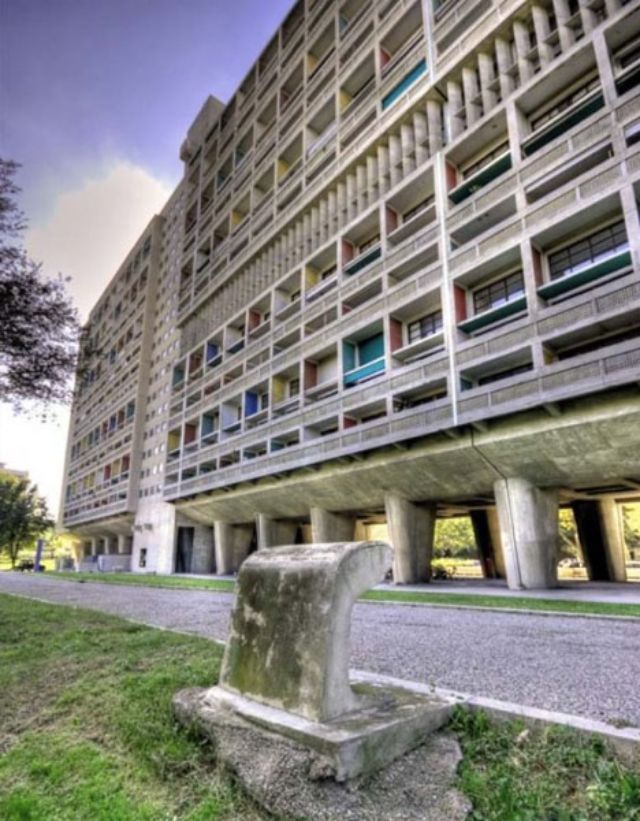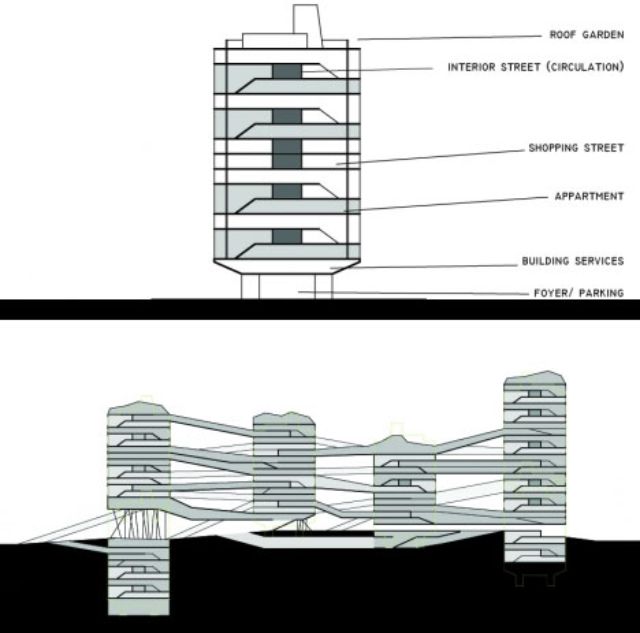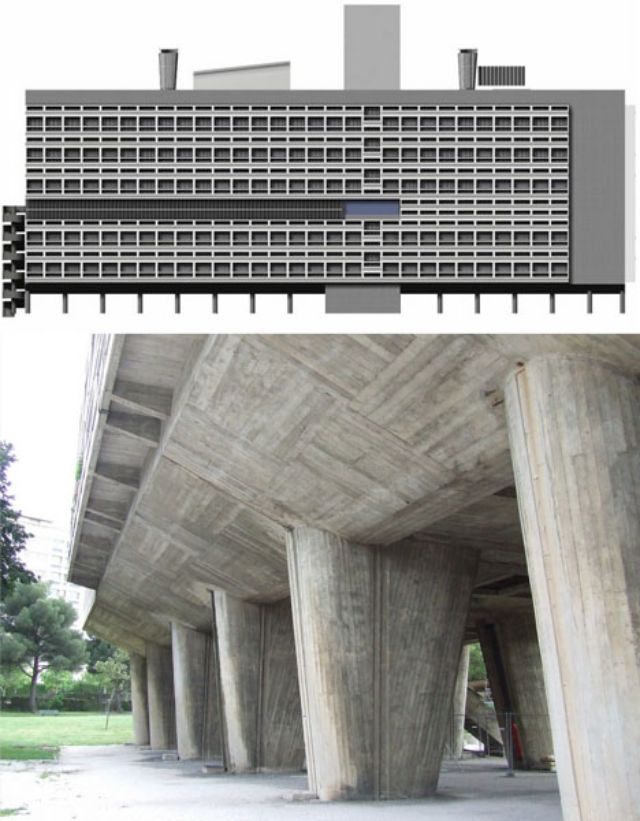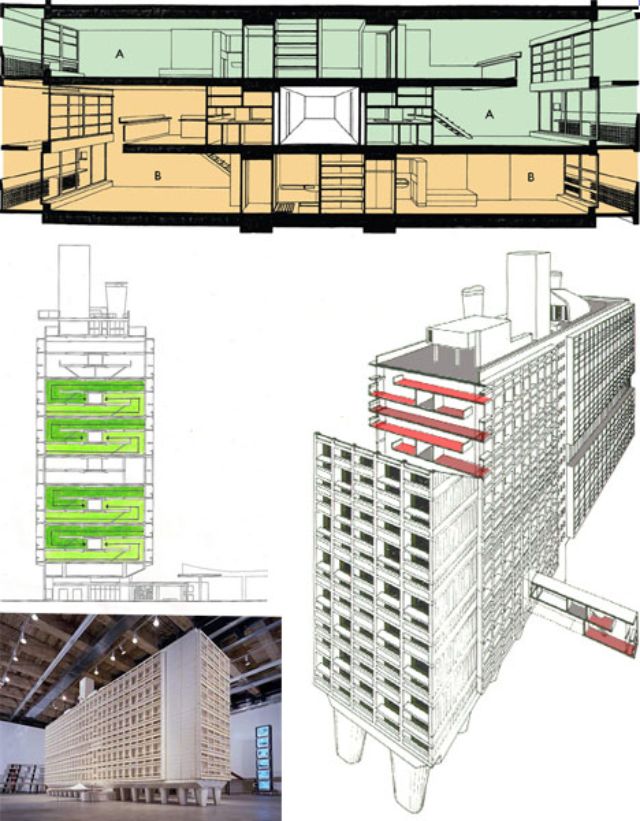Unite d’Habitation: L’Original Modern Anti-Zombie Fortress?

Yes, zombies. Well, it might not have been what French urbanist Le Corbusier had in mind, but it may as well have been. The Unité d’Habitation are in many was the ultimate in (physically) defensible space, lofted above an open ground floor, sectionally complex with segmented corridors and split-level dwellings… and packed with everything needed for (early) survival in case of (partial) apocalypse.


Each “unit of housing” was made to be self-sufficient, featuring shops, hotel rooms, medical and educational facilities and a rooftop deck with a terrace, running track, performance space and swimming pool.

Though only a few were actually built, scattered around Europe, some versions of the plan called for a whole series of these structures interconnected by suspended pathways – a Utopian city in the clouds, as it were, allowing residents to remain aloft indefinitely.

At the ground level, the building is raised up on think outward-sloping piloti (piers), which even the savviest zombie (with some brains – just not yours, hopefully) would have a tough time scaling.

And should the zombies reach one level, the alternating corridors (allowing multi-level units to span from one side to the other) would make a retreat to higher floors far more feasible.


In all seriousness, though, this classic Modernist work was a turning point in our understanding of cities, and also represents a curious point in history where some architects imagined we would all lift in lofted mini-cities in a not-too-distant future. While urban designs have deviated from that course somewhat over time, we might all regret it should the undead ever rise to reclaim the planet.
Contemporary zombie fortress connoisseurs should at least see the resemblance to the current emblem of zombie-fighting forces. If you’re a fan of “The Walking Dead,” “28 Weeks Later” or any of the iconic zombie horror films by George A. Romero, you’re probably already seeing that as you look at these photos and walk around your own city.




